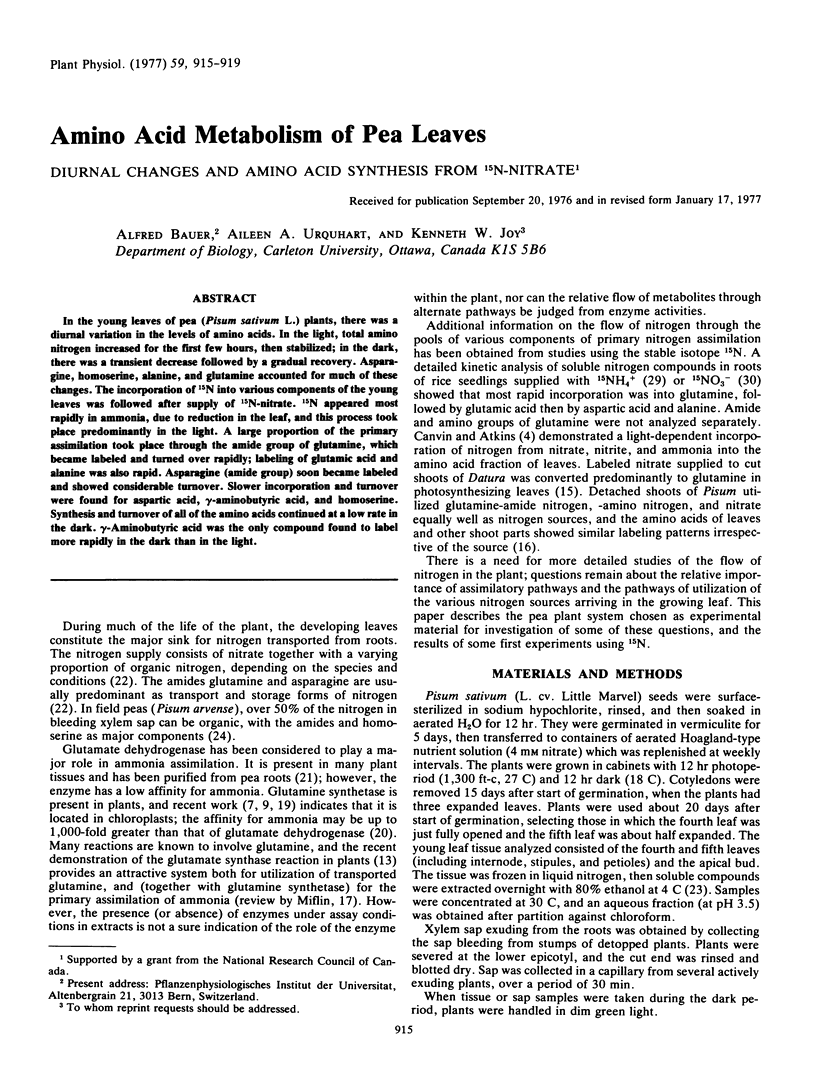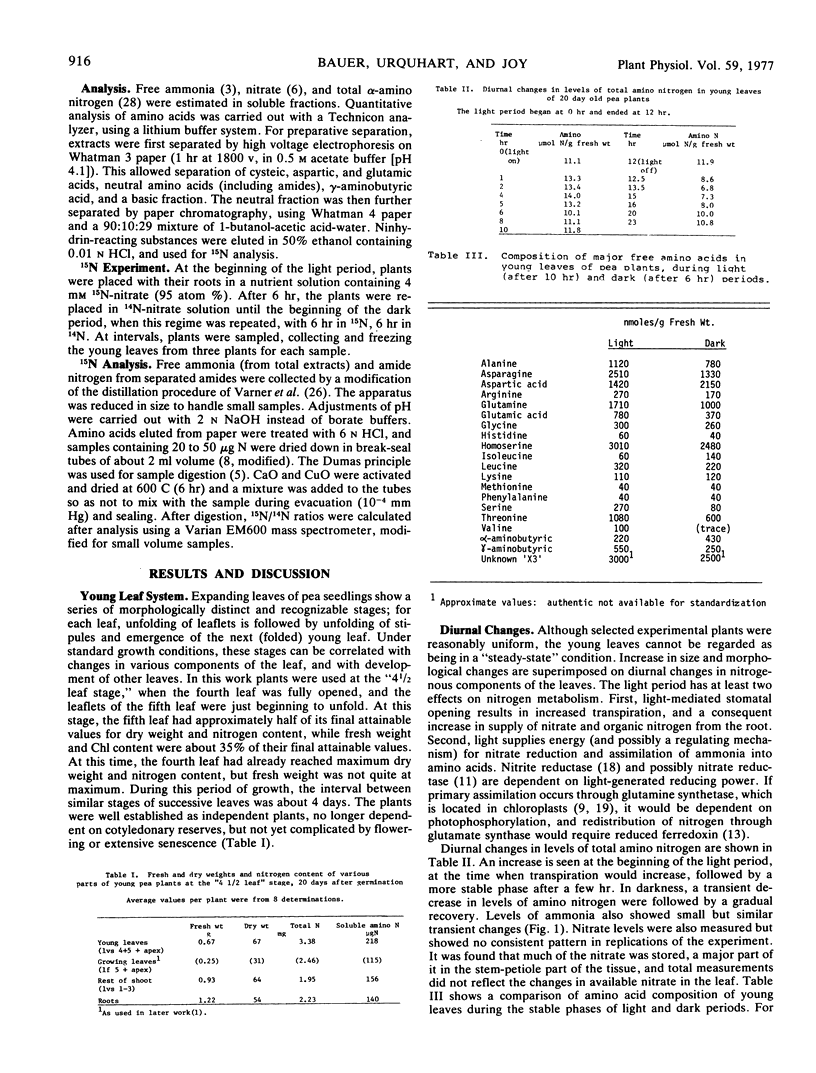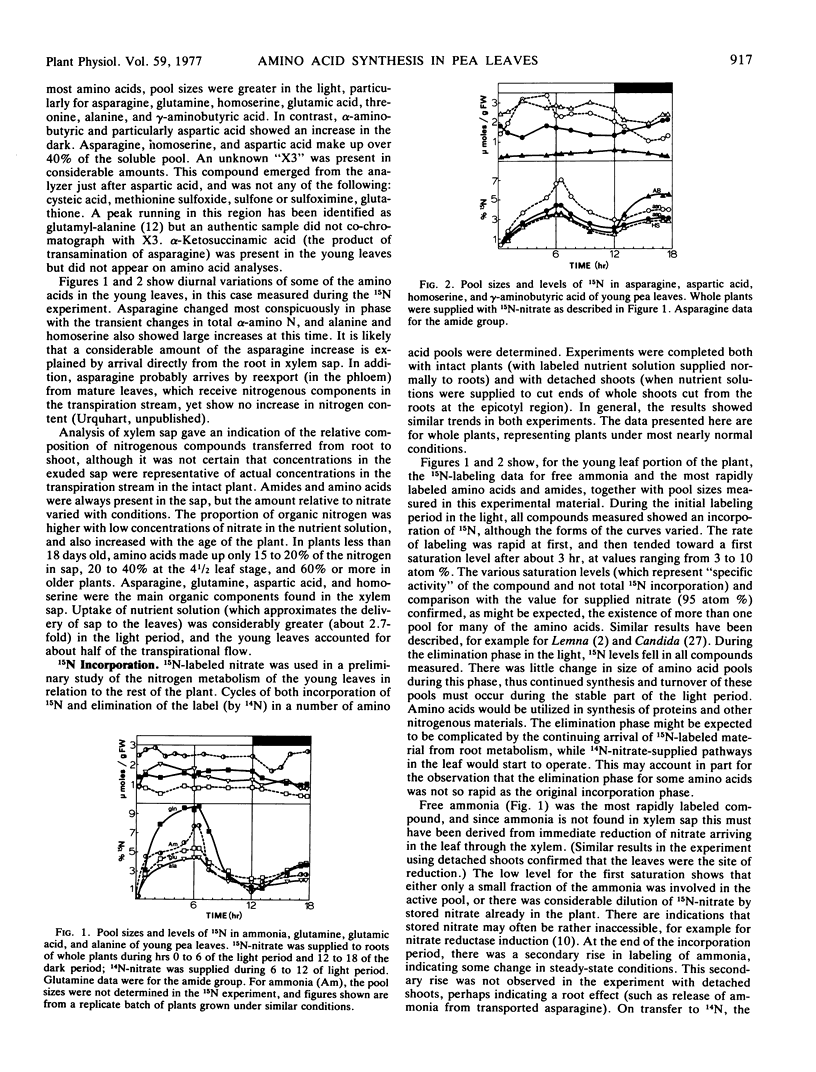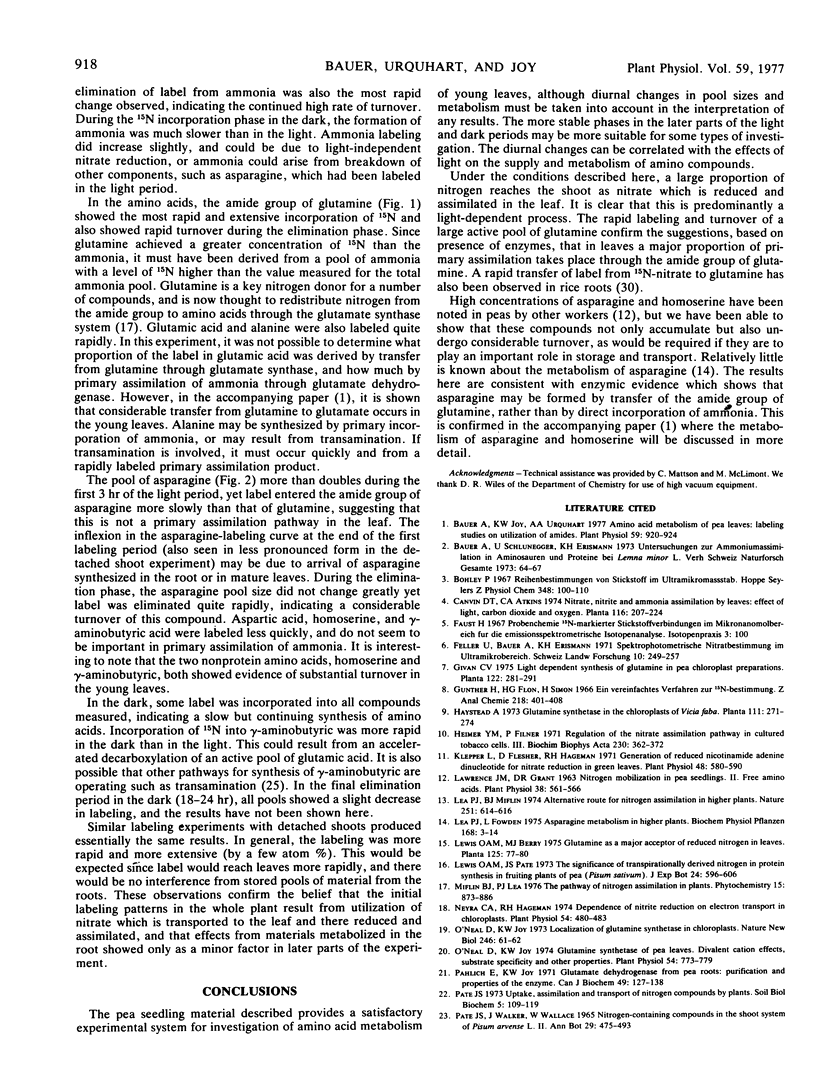Abstract
In the young leaves of pea (Pisum sativum L.) plants, there was a diurnal variation in the levels of amino acids. In the light, total amino nitrogen increased for the first few hours, then stabilized; in the dark, there was a transient decrease followed by a gradual recovery. Asparagine, homoserine, alanine, and glutamine accounted for much of these changes. The incorporation of 15N into various components of the young leaves was followed after supply of 15N-nitrate. 15N appeared most rapidly in ammonia, due to reduction in the leaf, and this process took place predominantly in the light. A large proportion of the primary assimilation took place through the amide group of glutamine, which became labeled and turned over rapidly; labeling of glutamic acid and alanine was also rapid. Asparagine (amide group) soon became labeled and showed considerable turnover. Slower incorporation and turnover were found for aspartic acid, γ-aminobutyric acid, and homoserine. Synthesis and turnover of all of the amino acids continued at a low rate in the dark. γ-Aminobutyric acid was the only compound found to label more rapidly in the dark than in the light.
Full text
PDF




Selected References
These references are in PubMed. This may not be the complete list of references from this article.
- Bauer A., Joy K. W., Urquhart A. A. Amino Acid metabolism of pea leaves: labeling studies on utilization of amides. Plant Physiol. 1977 May;59(5):920–924. doi: 10.1104/pp.59.5.920. [DOI] [PMC free article] [PubMed] [Google Scholar]
- Bohley P. Reihenbestimmungen von Stickstoff im Ultramikromassstab. Kjeldahlveraschung und Phenol-Hypochlorit-Reaktion. Hoppe Seylers Z Physiol Chem. 1967 Jan;348(1):100–110. [PubMed] [Google Scholar]
- Heimer Y. M., Filner P. Regulation of the nitrate assimilation pathway in cultured tobacco cells. 3. The nitrate uptake system. Biochim Biophys Acta. 1971 Feb 23;230(2):362–372. doi: 10.1016/0304-4165(71)90223-6. [DOI] [PubMed] [Google Scholar]
- Klepper L., Flesher D., Hageman R. H. Generation of reduced nicotinamide adenine dinucleotide for nitrate reduction in green leaves. Plant Physiol. 1971 Nov;48(5):580–590. doi: 10.1104/pp.48.5.580. [DOI] [PMC free article] [PubMed] [Google Scholar]
- Lawrence J. M., Grant D. R. Nitrogen Mobilization in Pea Seedlings. II. Free Amino Acids. Plant Physiol. 1963 Sep;38(5):561–566. doi: 10.1104/pp.38.5.561. [DOI] [PMC free article] [PubMed] [Google Scholar]
- Lea P. J., Miflin B. J. Alternative route for nitrogen assimilation in higher plants. Nature. 1974 Oct 18;251(5476):614–616. doi: 10.1038/251614a0. [DOI] [PubMed] [Google Scholar]
- Neyra C. A., Hageman R. H. Dependence of nitrite reduction on electron transport chloroplasts. Plant Physiol. 1974 Oct;54(4):480–483. doi: 10.1104/pp.54.4.480. [DOI] [PMC free article] [PubMed] [Google Scholar]
- O'Neal D., Joy K. W. Localisation of glutamine synthetase in chloroplasts. Nat New Biol. 1973 Nov 14;246(150):61–62. doi: 10.1038/newbio246061a0. [DOI] [PubMed] [Google Scholar]
- O'neal D., Joy K. W. Glutamine synthetase of pea leaves: divalent cation effects, substrate specificity, and other properties. Plant Physiol. 1974 Nov;54(5):773–779. doi: 10.1104/pp.54.5.773. [DOI] [PMC free article] [PubMed] [Google Scholar]
- Pahlich E., Joy K. W. Glutamate dehydrogenase from pea roots: purification and properties of the enzyme. Can J Biochem. 1971 Jan;49(1):127–138. doi: 10.1139/o71-018. [DOI] [PubMed] [Google Scholar]
- Streeter J. G., Thompson J. F. In Vivo and In Vitro Studies on gamma-Aminobutyric Acid Metabolism with the Radish Plant (Raphanus sativus, L.). Plant Physiol. 1972 Apr;49(4):579–584. doi: 10.1104/pp.49.4.579. [DOI] [PMC free article] [PubMed] [Google Scholar]


